China3D printingNet August 17th, La Blanca is located in the Petén province in northern Guatemala, close to the Salsipuedes River. It is an ancient Mayan settlement. One of its main archaeological focuses is the Acropolis, which was dominated by the city in the late Classical era (BC) A dwelling built by others. It consists of three buildings, two of which are thatched roofs and the other is a soil layer, and a large staircase leads directly to the platform. Over the years, research on settlements has been frequent, which is why a visitor center was established there in the framework of the La Blanca Project in 2010. Tourists can see it there, and locals are a good place to attend cultural heritage workshops and view educational materials.
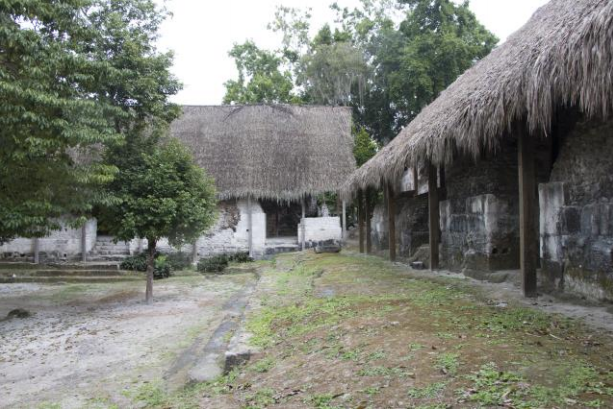
Southeast of the Acropolis
However, one thing it lacks is a scale replica of the Acropolis, used as a tool to spread the Mayan architectural heritage.Before the use of digital survey technology, this was difficult to achieve, but3D printingTechnology is changing the way we record and protect cultural heritage sites.Three researchers from the Political University of Valencia (UPV) published in La Blanca about the use of3D printingA case study and how the team was able to use digital survey technology to record the complex building “to obtain a high-fidelity model” of the Acropolis building. “
The purpose is to use the Acropolis model to improve the content of the visitor center exhibition hall, to conduct an in-depth study of all procedures used to obtain the Acropolis real-world model, and to propose workflow cases that can be used in similar situations, and to test these resources to disseminate Mayan history.
The project actually started in 2012 with the Faro Focus3D S120 scanner, which is a fast but compact terrestrial laser scanner (TLS) that can provide effective 3D measurements. Between 2012 and 2015, three digital surveys were conducted in different areas of the Acropolis, and a total of 118 scans were conducted.
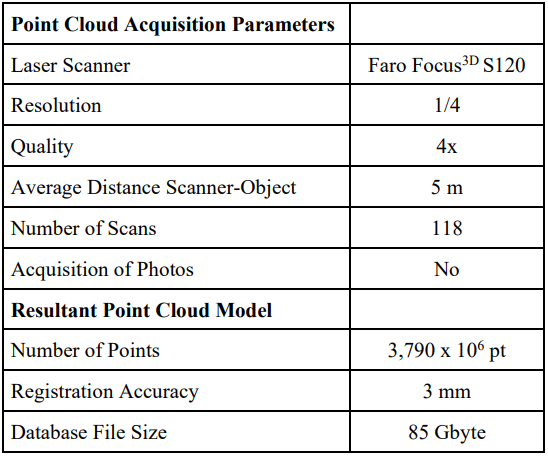
Acquisition parameters and final point cloud model
The researcher said: “After obtaining these scans, we registered the point cloud in the laboratory and obtained a point cloud model based on the reality of the Acropolis.” “This model shows a high geometric accuracy. 2D classic engineering drawings and obtaining 3D polygon mesh models are very useful.”
It is important to create a method for inverse modeling of the Acropolis, which should start with laser scan data.
“Usually, you can start with a traditional 3D model that is directly modeled (such as the building model we are designing), or you can start printing a 3D object from a reality-based 3D model that has already been obtained. Real data obtained by laser scanning or digital photogrammetry .” They explained.
Reverse modeling software can create a 3D polygonal mesh based on the point cloud model, but usually the first mesh needs to be optimized to achieve a model with sufficiently high quality to perform3D printing. Optimizing and constructing the 3D mesh model of Acropolis is very difficult, because there is a lot of redundant data in the early scans, and the highest part of the wall lacks data, because “the thatched roof system creates an obscured area”, but they managed to do it.
“First, the 3D point model of the Acropolis is divided into 9 parts and exported to the .ptx format. Then, each part of the model is imported into the 3D system Rapidform software at a reduction rate of 1/4. In the same software , We have constructed 9 different high polygon grids. Due to the high or low redundancy of the data collected in different field seasons, the heterogeneous structure of a single 9 grid is an additional problem.”
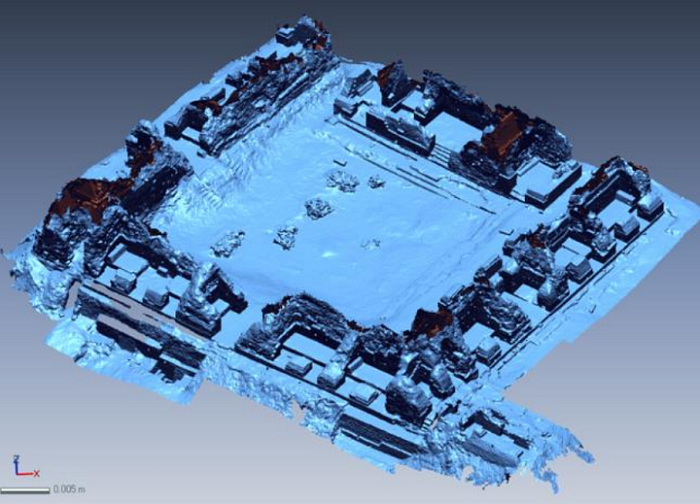
Reality-based grid of the Acropolis.
They completed the “global remeshing” of these nine polygons to reduce the number of polygons in the final model and to make the average size of the edges and their number and distribution uniform. Then process each mesh separately to fill in the boundaries and eliminate topological errors, such as overlapping or redundant polygons. After merging all the meshes, the team had a medium polygonal model of the Acropolis. They still need to integrate 3D models with these processes and turn to reverse modeling and other software tools to accomplish it. They completed the manual retopology of the model boundary, which resulted in a simplified outline. Then they used them as “references for directly modeling the missing parts of the Acropolis.” Then, they had to use Luxology Modo and 3D System Rapidform to homogenize the structure of the two grids, and then merge these grids into one model.
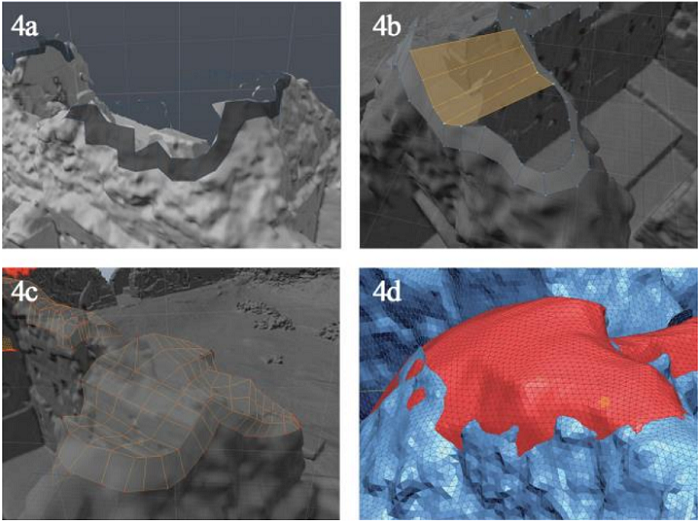
Model integration. 4a: Topology of the boundary; 4b: Direct modeling; 4c: Result mesh; 4d: Smooth mesh.
Maxon Cinema 4D’s sculpting tools are used to improve the homogeneity of the model, “it also helps to emphasize the difference between the reality-based part of the model and the directly modeled surface that is not detected by the laser scanner.” Finally, with the help of geometry The modeling tool integrates the terrain mesh, and the “3,6 Acropolis 3D model” (consisting of 6,043,072 polygons with a uniform structure on the entire mesh) is ready to proceed3D printing. The team did notice a slight deviation in the mesh between one of the original high-poly meshes and the final model, but the FDM they used 3D printingThe machine can handle it.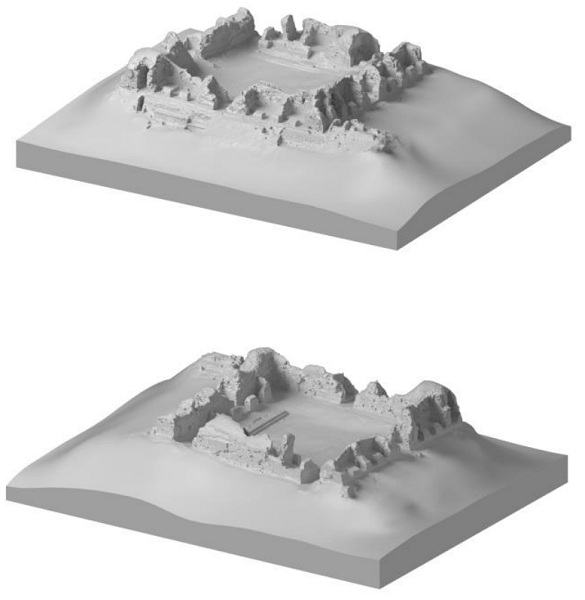
The final model of the Acropolis.
The team conducted some printing tests with different configurations and scales in order to select the appropriate settings before printing the entire model from PLA, and the results were very accurate compared to the virtual 3D model.“The missing part of the Acropolis was not detected by the laser scanner and then manually reconstructed. It seems to be perfectly integrated into the model’s3D printingIn the version, it also shows the diversity between them and the model-based reality. The researcher wrote.“Through the analysis of these tests, we have concluded that the representativeness of the Acropolis is satisfactory.”The previous test with a scale of 1:100 and an accuracy of 0.3 mm provided the best fidelity, so the team used these parameters to print the Acropolis model. Its print size is divided into 17 different parts, and the model is shipped to La Blanca. It is reassembled here and is located in the middle of the exhibition hall of the La Blanca Visitor Center, protected by a transparent plastic dome that everyone can admire.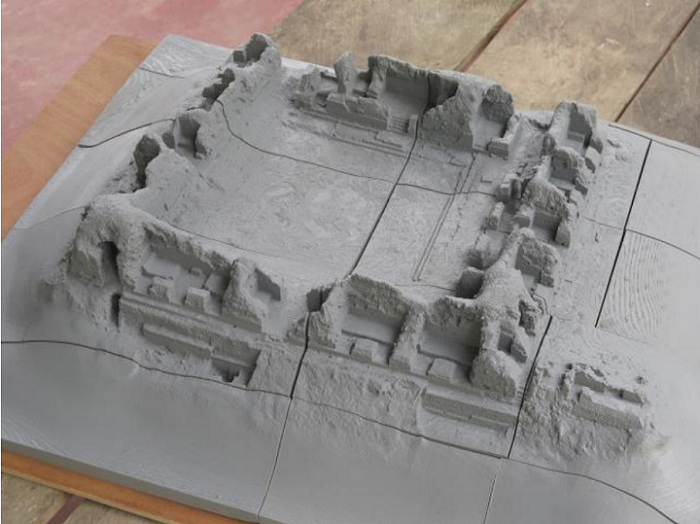 3D printingModel” alt=” The end of the Acropolis3D printingModel” width=”620″ height=”464″ />
3D printingModel” alt=” The end of the Acropolis3D printingModel” width=”620″ height=”464″ />
The end of the Acropolis3D printingModel.
China3D printingNet Comments: Today, the physical replica of the Acropolis is an important resource. It allows visitors to fully understand the main buildings of the site, which is not easy in the jungle of Guatemala. It also provides an exclusive view of certain parts of the Acropolis, which has been studied by researchers and is now protected by a layer of soil to ensure its preservation. In addition, it is a useful resource to support dissemination, and it is also an important teaching resource for students to visit.
China3D printingNet compile article!
(Editor in charge: admin)


0 Comments for “Digital measurement technology and 3D printing were used to create ancient Mayan Acropolis models”